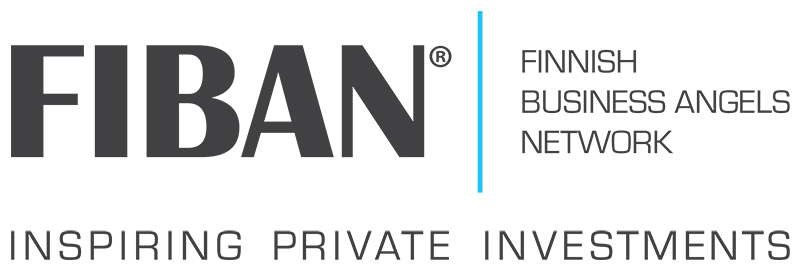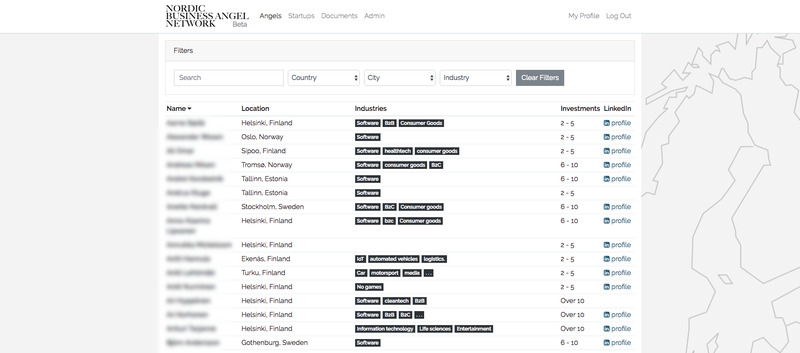My year at FiBAN
Most of 2017 I have been working for the Finnish Business Angels Network ry (FiBAN) as part of my non-military service. Before starting, I didn’t really know what to expect from this year and there were times when I questioned whether or not I had made a mistake. However, now looking back, I’m very happy with my decision and the time I spent at FiBAN. Here are some of my thoughts about my time there.
Background
First, I’ll explain a bit what the non-military service means and tell a bit about the FiBAN organization as I’m aware you might not be familiar with either one of them.
Non-Military Service in Finland
In Finland, we have compulsory military service for all men between ages 18 and 30. The military service takes 6, 9, or 11.5 months depending on the person’s role and assignment in the military. However, there is also a choice of completing the military service requirement by partaking in non-military service for 11.5 months. The non-military service consists of a month-long training period at the non-military service center and 10.5 months of full-time work at a governmental or a non-profit organization. However, the role of the non-military service person is not pre-defined or limited and can be decided by the organization and the service person to fit the skills of the service person.
Finnish Business Angels Network ry (FiBAN)

FiBAN is a non-profit association consisting of over 600 investor members who are interested in investing in startups. These “business angels” have often a history of entrepreneurship and usually provide the startups they invest in with their expertise in addition to their money. FiBAN itself doesn’t make investments but focuses on connecting FiBAN’s members with promising startups looking for funding.
I heard about FiBAN through an acquaintance I had met while working at Solinor. He recommended me to contact FiBAN and I had the opportunity to be the first non-military serviceperson at FiBAN.
My Time at FiBAN
A year is a long time. A lot of things can happen in a year, but looking back it feels like hardly any time has passed. As I was the first non-military service person at FiBAN, there were some growing pains before I could find my role in the organization. Here’s my story.
Finding My Role at FiBAN
Before starting at FiBAN, I had naïvely envisioned that I could waltz in with my software developing knowledge, easily notice inefficient practices or overlooked needs, and solve them by building software tools and systems. However, after starting in February, I soon noticed that it wouldn’t be as easy as I thought (nothing ever is) as the three-person office, providing mainly very personal help and services, didn’t seem to need my expertise. There was also an understandable aversion of complex technical solutions as the office personnel wouldn’t have the required skills for maintenance of such systems after my departure and buying these services could be expensive.
I spent my time in the spring chasing different ideas but felt my time was partly wasted as there was a severe lack of commitment to and focus on any single idea. I did use my technical skills to update the FiBAN website, but it wasn’t a pleasant experience as the pages were built on top of the Weebly content management system, which is quite horrible to use. Weebly’s editor feels extremely sluggish to use and contains many inconsistent “features” which make building a website a very exasperating experience.
At times I felt that I had made a mistake in choosing to do my non-military service at FiBAN as I didn’t see how I could properly utilize my skills and thought I would be doomed to do menial tasks for the rest of the year. However, eventually things did turn around and I found ways in which I could really make an impact.
Making an Impact
 A screenshot of the web service I created for NordicBAN
A screenshot of the web service I created for NordicBAN
The first project I created that was really adopted by FiBAN and its members was an automatic meeting room reservation system. It was for FiBAN’s investor members to book a meeting room from the FiBAN office without needing to bother our office staff.
The most important project that I undertook was a web service for NordicBAN (another angel network that FiBAN participated in founding this year) where the investor members can find and connect with each other. The service provides user authentication so the information would be only available to the members of the angel network. Investors can also browse open investment rounds and auxiliary documents.
This summer I happened to buy a camera for my trip to China and decided to start photographing as a hobby. This proved to be very useful at FiBAN as FiBAN organizes many events but only has a few good photos from the events. This was a need I noticed and one that I could fulfil while doing something I enjoy and improve my skills.
What I Learned During the Year
I feel that there were many things I learned this year and got to improve myself on. Here are some that you might find interesting.
Business Angels, Who Are They?
Following the activities of FiBAN, I learned a lot about how the investor side of the startup culture work. Before this, my exposure to the startup community had been mostly limited to attending to a couple of events organized by the AaltoES at our university.
I got to see what kind of people the business angels are. They are a very interesting bunch and many have a background in entrepreneurship. At FiBAN some call angel investing as co-entrepreneurship and I can attest that as an angel investor telling about his/her investment has the same energy as the startup founder telling about his/her startup.
Startups & Pitches
I also got to see what good and bad startup pitches look like. I also learned that the pitch alone doesn’t raise an investor’s interest as one can make an interesting pitch about a bad idea, but a startup with a horrible pitch can still have a good idea. The pitches I saw further showed that there are many startups trying to solve very similar problems. So, I would say based on seeing a single pitch or single startup it can be hard to say if it’s good or not but when you go through dozens it’s easier to notice the ones that stand out.
Self-Learning
Even though in the spring I had problems finding my role in FiBAN that gave me more free time to think about my own future and things I want to do and achieve. This enabled me to begin writing this blog, something I had already been thinking of doing for some time. Similarly, I have tried to read more this year. This year I managed to read Building Microservices by Sam Newman, Clean Code by Robert C. Martin, and I have almost finished Working Effectively with Legacy Code by Michael Feathers.
Google Ecosystem
While working on the things I built for FiBAN, I learned most about using the different APIs and scripting tools offered by Google and G Suite. The meeting room booking system I made is constructed on top of Google Sheets, Google Forms, Gmail and Google Calendar. All of these different services could be tied together quite easily with the use of Google Apps Script.
Conclusion
I’m very happy for choosing non-military service over the military service. Even though running in the forest playing war could have been fun, I much rather improve my professional skills while working in a clean office in the middle of Helsinki and sleeping nights at home in my own bed.
I profusely enjoyed my time at FiBAN. During the year I met and got to know many very talented and hard-working people. I feel I could really bring value to FiBAN but also improve my skills and myself over the year.
Thank you to everyone who helped to make this year awesome. You are awesome!
